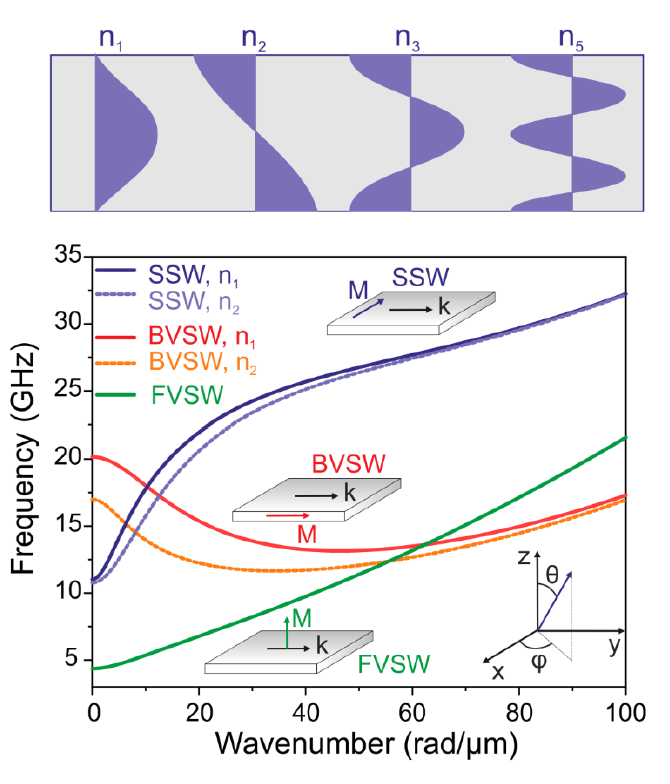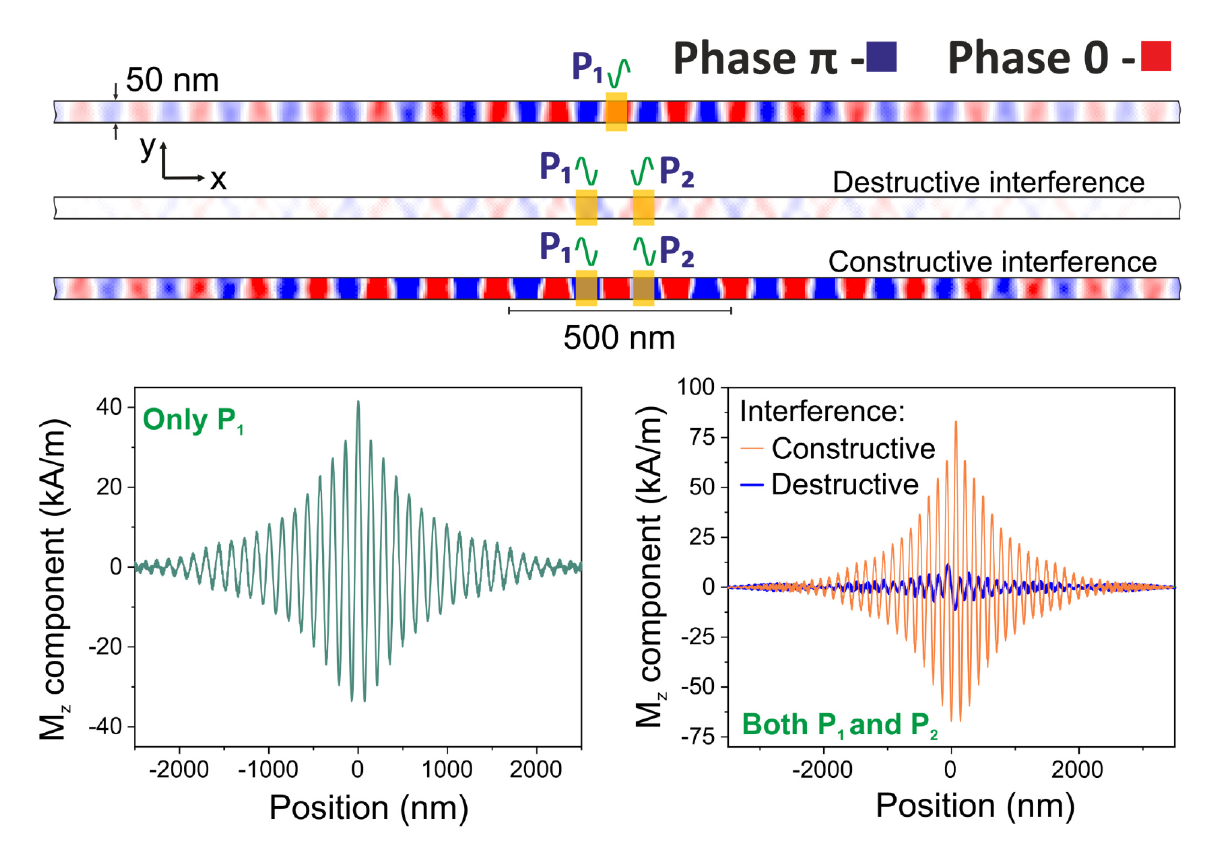|
A group of disruptive spintronic devices concepts have been based on spin waves as information carriers. Spin waves are oscillatory collective excitations of the magnetic moments in ferromagnetic or antiferromagnetic media. Of crucial importance in spin-waves devices and circuits are the waveguide structures. In waveguides with dimensions comparable or smaller than the wavelength, the dispersion relation of spin waves is strongly affected by waveguide boundaries and lateral confinement effects. In general, the dispersion relation of long-wavelength dipolar spin waves depends on the direction of the wavevector and the static magnetization. There are three limiting cases of dipolar spin waves, often called surface spin waves (SSW), forward volume waves (FVSW) and backward volume waves (BVSW) (details: Mahmoud et al., J. Appl. Phys. 128, 161101 (2020)) |
 |
 |
| When logic levels are encoded in spin-wave amplitude or phase, performing a logic operation requires the combination of different input waves and the generation of an output wave with an amplitude or phase corresponding to the desired logic output state. |
 |
In absence of nonlinear effect, the interaction of coherent waves is described by interference, i.e. the addition of their respective amplitudes at each point in space and time. For in-phase waves with equal frequency, constructive interference leads to a peak-to-peak amplitude of the generated wave that is equal to the sum of the peak-to-peak amplitudes of the input waves. By contrast, destructive interference leads to a subtraction of the peak-to-peak amplitudes of input waves when their phase difference is π. |
|
| Top |
